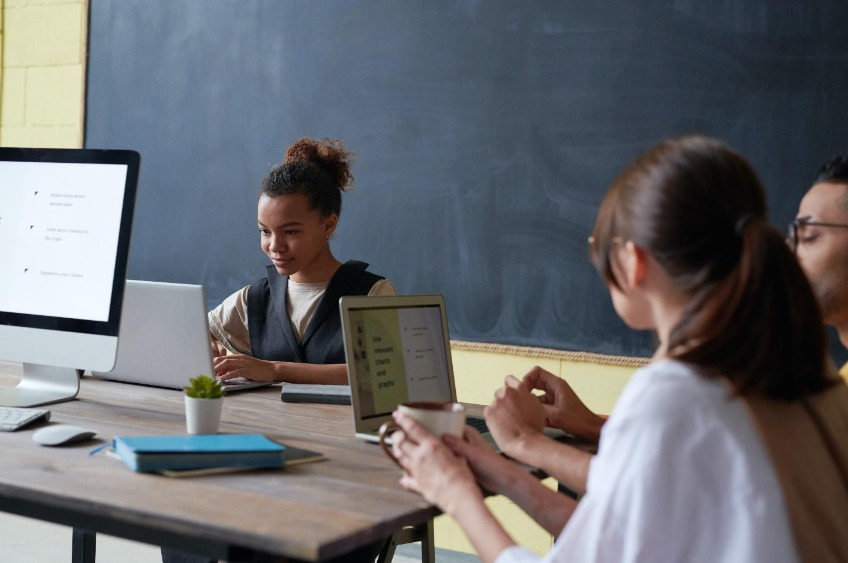Throughout the stages of learning, students benefit from engaged instructors working daily to deliver appropriate and quality instruction. While teaching techniques vary from teacher to teacher, the main goal remains supporting students to attain academic and career success. Over the years, interactive learning has emerged as a method instructors prefer for capturing student attention and increasing their understanding of course material. This article discusses interactive learning as an educational strategy, examining the benefits and offering some insights.
Defining the Concept | What Is Interactive Learning?
Interactive learning is an educational strategy that seeks to engage students actively in learning, mostly using technology. Interactive learning is student-oriented and considers learners at the instructional process’s core. It differs from traditional educational strategies that see students as passive information consumers. Although some people consider the educational component of interactive learning somewhat intimidating, we need to understand that innovation exists to support pedagogy. Instructors are encouraged to carefully evaluate EdTech by considering tools that open up inspiring lesson possibilities.
What Are the Benefits of Interactive Learning
Interactive learning has numerous benefits and spreads across a wide range of skills and educational milestones. Here are some notable ones.
-
It Promotes Engagement
Evidence shows that engaging students in learning improves their attention and focus and encourages them to participate in high-level critical thinking. Also, studies show that teachers who adopt a student-centered approach to instruction grow opportunities for student engagement. Finally, the more involved learners are in educational activities, the more success they experience regarding learning objectives.
In fact, a recent study shows that 87% of students find classes more engaging when teachers introduce interactive tech in the learning setting. Strategies for improving student engagement through active learning include using question-and-answer sessions, group discussions, short writing assignments, and interactive lectures. In addition, students who need help with assignments can order custom papers from websites like EssayWriter.org.
-
Allows Flexible Learning
Regarding the effectiveness of learning, a higher level of flexibility allows students to adapt their learning pathways according to their interests and abilities. The goal here is to generate a better experience and engage more with the course content. In addition, interactive learning allows students to create schedules and plan breaks between learning to recharge. The breaks then lead to higher retention of knowledge and better academic performance.
Due to technological innovation, teachers and administrators can now tailor learning experiences according to the specific needs of learners. Interactive learning also means that education has become more accessible to students worldwide. Geographic boundaries no longer limit students.
Strategies for Effective Interactive Learning
There are many tools that instructors can use to allow interactive learning and improve student engagement with course material. Here are a few notable ones.
-
Enhanced Lectures
It is important to reiterate that learning is not a spectator sport. Students do not get to learn much when they remain passive while listening to teachers and memorizing preset tasks. Interactive learning requires students to talk and write about their learning, relate the information to past experiences, and apply knowledge to their daily lives. Enhanced lectures are a broad category that includes a range of learning approaches in the classroom. Enhanced lectures can resemble traditional settings but with the use of interactive tools that permit instructors to ask questions and involve learners.
-
Flipped Classrooms
Over the past few years, flipping classrooms has gained popularity as a tool for improving student engagement. Known as inverting a classroom, the process involves introducing course materials for students to examine outside class. The traditional in-class sessions are then dedicated to inquiry and application of knowledge. The goal is to use these sessions to meet the needs of individual learners, where the teacher acts as a guide instead of being the custodian of knowledge. In addition, experts indicate that the flipped classroom gives students increased exposure to learning before class.
-
Group or Collaborative Learning
Evidence shows that student collaboration is a monumental part of building an interactive learning environment. Peer instruction encourages research and self-driven learning, allowing students to share what they know and reinforce their skills. In this approach to interactive instruction, the professor teaches for a short time, then periodically asks students to elaborate on points and ask questions. Students can form groups to discuss concepts and work on tasks.
Interactive learning enhances collaboration, promotes flexibility in education, and supports critical thinking. It pushes students to stretch their abilities and engage more with course material. As teachers think of ways to improve student engagement, they should find strategies to clarify expectations, design effective evaluation approaches, and offer helpful feedback.












